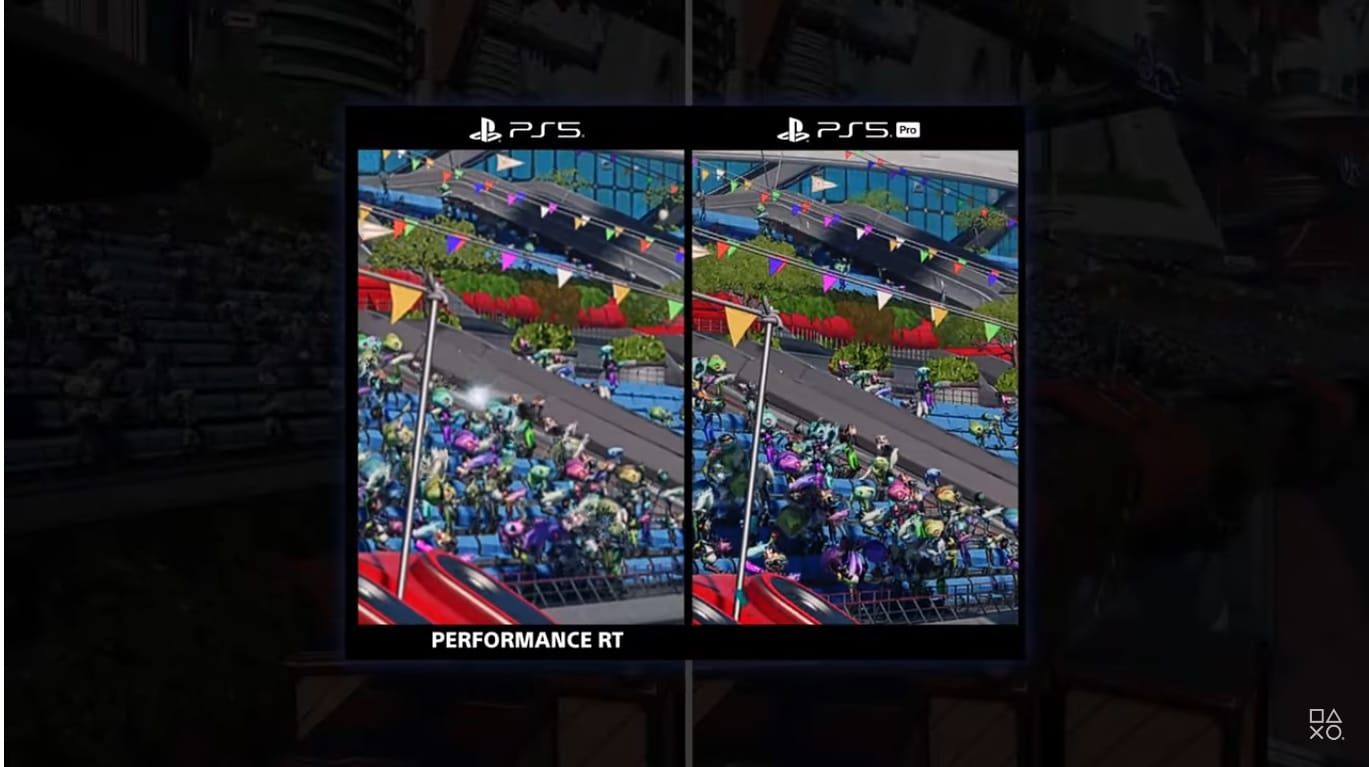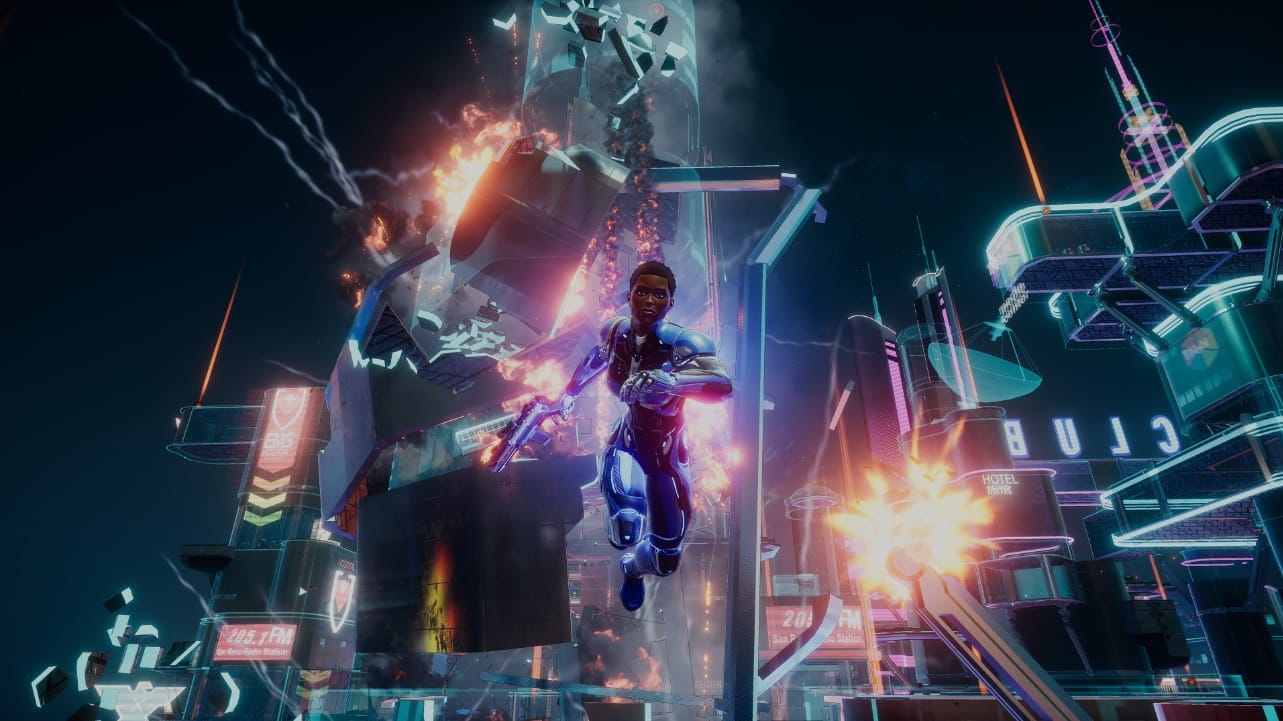PS5 Pro raises questions about the future of consoles | This Week in Games
Console gaming used to have a bunch of advantages over alternative forms of gaming. Those have lessened over time, and the PS5 Pro announcement suggests the console market will be narrowed further in the future.

Sony unveiled its PlayStation 5 Pro this week, and if you haven't seen the 9-minute unveiling video, it's an interesting tightrope act.
First off, Sony spent the first two minutes talking about how great the original PS5 still is, ensuring that it is still seen as a viable choice for players.
Sony needs to sell customers on the benefits of paying a premium price for the PS5 Pro – especially if it's being bought as an upgrade – but it can't trash talk the standard PS5 like EA regularly does with last year's Madden because it's still the company's primary console on the market, and will be for years to come.
So given that PS5 is still pretty great, what reason is there for players to part with $699, the highest asking price for a new piece of console hardware since the 3DO? (And a little bit more if they want to add a physicaldisc drive onto it.) Mark Cerny summed it up in the video:
"The dreams of the developers are bigger than can be supported at 60 frames per second, and that leads to an aspect of modern gaming we're all familiar with: graphics mode. It can be a difficult choice."
Yeah, that's pretty much it. That little slider where you can choose to maximize graphical fidelity or drop some of the bells and whistles in order to ensure a solidly high frames per second.
At the moment, Cerny says players go with the frame-rate-focused Performance Mode about 75% of the time.
"Removing that decision, or at least narrowing that divide, is one of the key targets of PlayStation 5."
So the big selling point of the PS5 is not having to choose between fidelity or fluidity. Or still having to make that choice, but having the differences be less meaningful. It's a key target for Sony, at least. Let's hope it hits that target a little closer than it came with the notorious Killzone 2 E3 2005 trailer, which it later explained was "a target render of what we thought would be possible on the PS3."
The nice thing about the target this time around is that Sony could probably miss it completely and a certain chunk of the audience would never know the difference. The gap between Fidelity Mode and Performance Mode is already slight enough that in side-by-side video comparisons in the PS5 Pro reveal video, Sony felt the need to both zoom in and switch to slow motion just so the audience could actually see the difference.

Now, I'm getting older and my eyesight isn't quite what it used to be, so a lot of this is going to be lost on me. And I've got nothing against people who can tell the difference and think it's worth a premium, or Sony for catering to their desires.
But it does have me wondering about the future of the console market for a number of reasons. So let's go through those and try to imagine what the future of the console space might hold.
Diminishing Returns
This is the big one where the PS5 Pro is concerned. The existing hardware is already capable of so much, and the number of previously impossible game experiences that will be enabled solely by more horsepower is dwindling.
We have seen this several times with the cloud computing push in the past decade. From Shinra Technologies and Xbox One's Power of the Cloud to Improbable and Google Stadia, we were promised new gaming experiences literally impossible on existing hardware. We even got a handful of tech demos to showcase those possibilities, and they largely amounted to impressively detailed destructible environments and massively multiplayer games that made it very clear having hundreds of individual players running around the same game world is a much bigger design challenge than a technical challenge. (And I absolutely don't say that to downplay how difficult a technical challenge it is.)

And even if beefier hardware can enable fun new gameplay, how many developers are in a position to take advantage of it? Nobody was better positioned or more successful than Sony at making showpiece games for powerful systems. God of War, Marvel's Spider-Man, Uncharted 4, Ghost of Tsushima… Sony's high-fidelity first-party lineup won the PS4 generation in a cakewalk over the Xbox One and the Wii U.
Yet the company has been desperate to change its approach in recent years, making a huge pivot to live service games and complaining about the profit margin of its industry-leading console business.
Sony knows the most successful games in the world now are not competing on fidelity or frame rate. They're games like Fortnite, Minecraft, Roblox, and Genshin Impact, live service titles that make their money not by their looks but by their habit-forming play patterns and massive userbases.
Pushing the envelope in the traditional blockbuster space requires an increasingly obscene level of graphical fidelity and a price tag to match. Sure, you can still stand out by trying something new on the gameplay front, but that carries a degree of risk when the classic strategy of "make the same thing, but better-looking thanks to new hardware" has been a safer path for publishers to take for generations.
People have been warning that AAA development was unsustainable since I started writing about games, but it really does appear as if we're scraping the ceiling, and have been for years. It was already 2018 when Rockstar was throwing so many developers at Red Dead Redemption 2 that we got horse testicles that shrink in cold weather. It's a silly detail that makes for a good marketing hook to get some buzz, but the only impact it has on the player is to shout, "Look how much we spent on this thing."

So yes, Sony can roll out new $700 hardware to play the latest and greatest, but fewer and fewer companies are going to be making games that take advantage of that capability. Because for many people, the systems on the market are already plenty powerful. I actually bounced off one of this generation's first big reasons to upgrade, Ratchet & Clank: Rift Apart, because the sheer amount of detail and stuff flying around on screen demanding my attention all at once was actually exhausting; I don't think I need hardware capable of even more chaos. Heck, most of the games I want to play can run on the Switch just fine, and that's seven and a half years old at this point.
(To be fair, that's coming from a writer who is so non-representative of the market that he loved the Dreamcast and the Vita, so take that into consideration.)
What's the point of a console, anyway?
What does a console do better than of the myriad gaming options people have?
About 40 years ago, there were some very clear answers to that question.
● Significantly cheaper than a proper computer, and significantly better than handheld options of the day
● Simpler: No installing games, no worries about incompatible hardware, no fiddling with autoexec.bat and config.sys files
● Purpose-built for gaming: They tended to have much better user interfaces than PC games for anything that didn't demand the complexity of a keyboard or the precision of a mouse.
● Ideal for multiplayer: Pre-internet PCs limited to hot-seat multiplayer or LAN parties, much easier to buy an extra controller for a console.
● First-party exclusives
Over the years, basically all these advantages have been lessened, or eliminated entirely.
Looking at the Gaming PC section of Best Buy's website yields a number of desktop options at the PS5 Pro's $699 price point (or lower!). And with the rise of mobile games and the ubiquity of smartphones, somebody looking to spend as little as possible on their gaming probably has a wealth of options already at their disposal, many of which play the same games they might want to be playing on consoles anyway.
At the same time, the console user experience has grown more complicated, while the PC experience has been greatly streamlined. PC gaming is no longer the domain of tinkerers and techies, and console gaming has narrowed the gap as well by adopting many of the same annoyances and complications of PC gaming. (The trade-off in the increased complexity in consoles is largely worth it, but it's a trade-off nonetheless.)
As for user interfaces, the PC has steadily closed the gap there since the 1991 introduction of the Gravis PC GamePad, with the official pads of the big three console makers all sporting PC compatibility.
And aside from a handful of games designed with couch multiplayer in mind, there's not much reason for consoles to have an advantage over PCs when it comes to multiplayer games now either.
As for "first-party exclusives," we may as well narrow that down to "Nintendo exclusives" now. Microsoft has been all-in on PC gaming for a while, Sony is publishing MLB: The Show on Xbox and Switch and bringing more of its first-party hits to PC, and those unsustainable budgets we talked about above are only heightening the pressure to get games out in front of the largest possible addressable market.

I'm sure Sony sees itself as judiciously bringing catalog titles to new platforms after they've done the lion's share of their business on PlayStation platforms, but I think the value that system exclusives bring cannot be measured solely by the units they sell. I have every confidence in Nintendo's Switch successor to be a huge hit, and part of that is because Nintendo games are still Special in a way they wouldn't be if you could pay $20 to buy Super Mario Odyssey or Breath of the Wild on PC today.
Exclusive software is the only differentiating point for consoles that platform holders have complete control over, and I'm surprised to see Sony moving to undermine the thing that has been its biggest advantage for the past decade.
It's not like this is a genie that can't be put back in the bottle; Nintendo struck a deal in the darkest days of the Wii U generation to bring its properties to mobile, and while it continues to work with mobile partner DeNA on "value-added services," it hasn't launched a mobile game based on a Nintendo brand in five years, and "hits" like Animal Crossing: Pocket Camp and Mario Kart Tour have been discontinued and backburnered, respectively.
However, Microsoft's desperation to drive profitability (as well as its legal obligations in the aftermath of the Activision Blizzard acquisition) are going to keep it from holding onto its exclusive content (this year's biggest Xbox game Indiana Jones is already confirmed for PS5), and Sony's moves to publish on rival platforms and release DRM-free versions of some of its crown jewels on GOG.com suggest its view on first-party exclusives is closer to Microsoft's than Nintendo's. If Sony's PlayStation business stumbles at all in the coming years (and there are big question marks around it at the moment), I wouldn't be surprised if its response likewise looked more like Microsoft's than Nintendo's.
As the console market's advantages over the alternatives continue to narrow, I believe the target audience for them will follow suit. I still maintain there will always be a place for consoles so long as players value playing games on their living room TVs, but that audience is becoming more targeted and specific. No doubt that's one of the reasons Sony felt comfortable offering the PS5 Pro at a premium price point during a generation that has already seen prices kept historically high, and even elevated over time.
That cohort of gamers seems to have been the target audience for last generation's mid-cycle refreshes. Back then, even with a clear selling point for consumers in 4K resolution capabilities, they didn't bump the number of systems being sold.

So what is Sony supposed to do a few years from now, when the generational model would suggest it's time for a PlayStation 6?
I wonder if we haven't hit the point where consoles become more like computers or smartphones, where new hardware announcements are met more with a raised eyebrow than a clenched fist full of preorder money, where the hot new hardware is just expected to run things from several generations ago, and people upgrade not because any specific new feature or software captures their excitement but because their old workhorse has finally broken down and they'll just take whatever the new standard happens to be.
And if the market's no longer driven by hardware makers' walled gardens, why would companies like Sony bother staying in what has been a loss-leading hardware game instead of taking another page from the 3DO playbook and setting platform standards so others can compete to make their own boxes that run to PlayStation specifications?
That seems like a possible future for consoles to me, but not one with compelling growth potential. If the best-case scenario for a platform holder doesn't have that much upside, why would they invest the increasingly obscene sums of money needed to push the envelope of AAA games to sell high-powered hardware? And if nobody's doing that, who needs to buy new hardware in the first place?
If you liked this piece, please consider signing up for the Unlosing Writer newsletter. It's free, but if you enjoy the work, I would greatly appreciate a monthly subscription or a one-time tip.